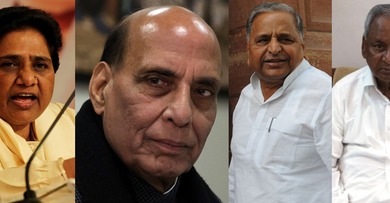
New Delhi, June 18: While the selling spree of the FIIs in the stock market continues unabated, there are precedents where they have returned in the next year.
In the FY 2008-09, FIIs sold their investments at a very large scale because of the global economic crisis and skyrocketing inflation rates in India. However, in FY 2009-10, the net investment turned positive, and in FY 2010-11 when the dust settled down, after that net investment grew at a rapid pace, Angel One said in a report.
This shows that FIIs sell their investments when the Indian economy is adversely affected, along with weak global sentiments. However, it is also observed that soon after FIIs sell their investment, they reduce the disinvestment amount or begin investing again in the coming year when things start improving, the report added.
FIIs’ #stake in these companies rose 2 per cent, 0.9 per cent, 1.04 per cent, 0.2 per cent, 1.16 per cent, and 0.37 per cent, respectively, during the January-March quarter.#StockMarket pic.twitter.com/wFSm9ZSDr6
— IANS (@ians_india) June 18, 2022
V.K. Vijayakumar, Chief Investment Strategist at Geojit Financial Services, said FIIs are selling heavily, particularly in emerging markets whose currencies are vulnerable to depreciation. This is normal at a time when dollar is appreciating (dollar index is above 104) and US bond yields are rising (US 10-year-yield is above 3.4 per cent).
“Also, in India, valuations are higher than long-term averages. It is important to appreciate the fact that FIIs are selling because of these reasons and not because of any concerns regarding Indian economy or corporate earnings. In fact, they are bullish on India and will stop selling and turn buyers when the macro construct, referred to earlier, changes,” he added.
In the past too, FIIs have sold heavily and then turned buyers. For instance, in 2008, the year of the global financial crisis, FIIs sold equities worth Rs 52,987 crore. In the next year, 2009, FIIs bought shares worth Rs 83,423 crore. So, FIIs will come back. For that, the global macro construct should change or the market should correct making valuations attractive, Vijayakumar added.
Manojh Vayalar, VP, Equity Derivatives, Religare Broking, said FIIs pattern of investing in emerging markets like India had a correlation with the debt market too.
Since 2010 the FII pattern of debt:equity money in India has been at a ratio of 1:3 with Rs 6.4 lakh crore equity inflow, they managed to add around Rs 2.1 lakh crore in the debt market too, he said.
“It is only FY 15-16, FY 21-22 and FY22-23 till date we have seen an outflow in the equity segment by FIIs. (In recent years FY15-16 saw the highest equity inflow of around Rs 55K crore whereas FY 17-18 had debt inflow of around Rs 1.19 lakh crore. So since FY 98-99, this outflow in the last 2 yrs of around 2.2 lakh crore is around 18-20 per cent of the net inflow statistically,” Vayalar said.
“We believe that since interest rates are going up in developed markets, it attracts fresh money into the debt market and hence, some emerging markets witness more debt outflow (like India 2018 onwards) and hence, some follow-up equity outflow as well. Since 2018, the net debt outflow from India is around Rs 1.52 lakh crore whereas equity is at just Rs 58K crore. So we believe that once this interest rate scenario stabilises in the developed countries, the FII flows shall continue in the equity segment as well,” he added.






